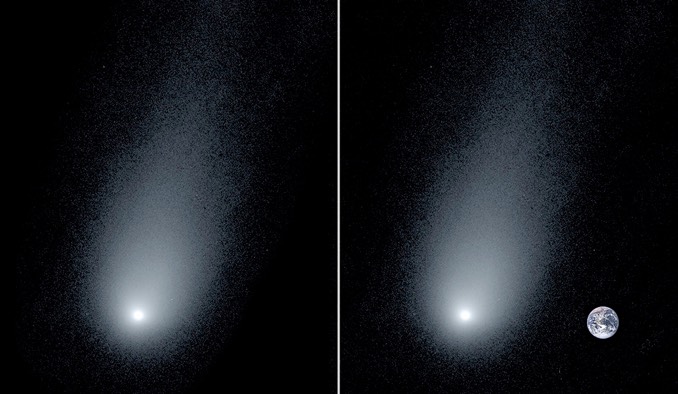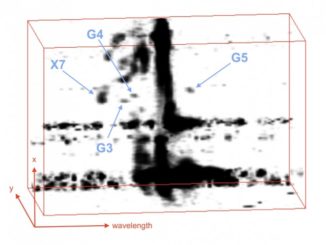
A fresh image of interstellar comet 2I/Borisov shows a 160,000-kilometre-long (100,000-mile-long) tail of icy debris stretching away in its wake as it races toward perihelion, on track to pass within about 300 million kilometres (190 million miles) of the Sun on 8 December.
Yale astronomers Pieter van Dokkum, Cheng-Han Hsieh, Shany Danieli and Gregory Laughlin captured the image on 24 November using the W.M. Kick Observatory’s Low-Resolution Imaging Spectrometer.
While the nucleus is “only” about 1.6 kilometres (1 mile) across, a Keck image with Earth superimposed to provide scale shows the comet’s tail extending 14 times farther than the planet’s diameter.
“It’s humbling to realize how small Earth is next to this visitor from another solar system,” van Dokkum said.
2I/Borisov – the “I” stands for “interstellar” – was discovered 30 August by Gennadiy Borisov. As the IAU-sanctioned name makes clear, it is the second object discovered to date entering Earth’s solar system from interstellar space. 1I/ʻOumuamua, a strange, cigar-shaped body discovered in 2017, was the first.
After passing by the Sun, 2I/Borisov will make its closest approach to Earth in late December at a distance of 1.9 astronomical units. It will depart the solar system in the direction of the constellation Telescopium.



